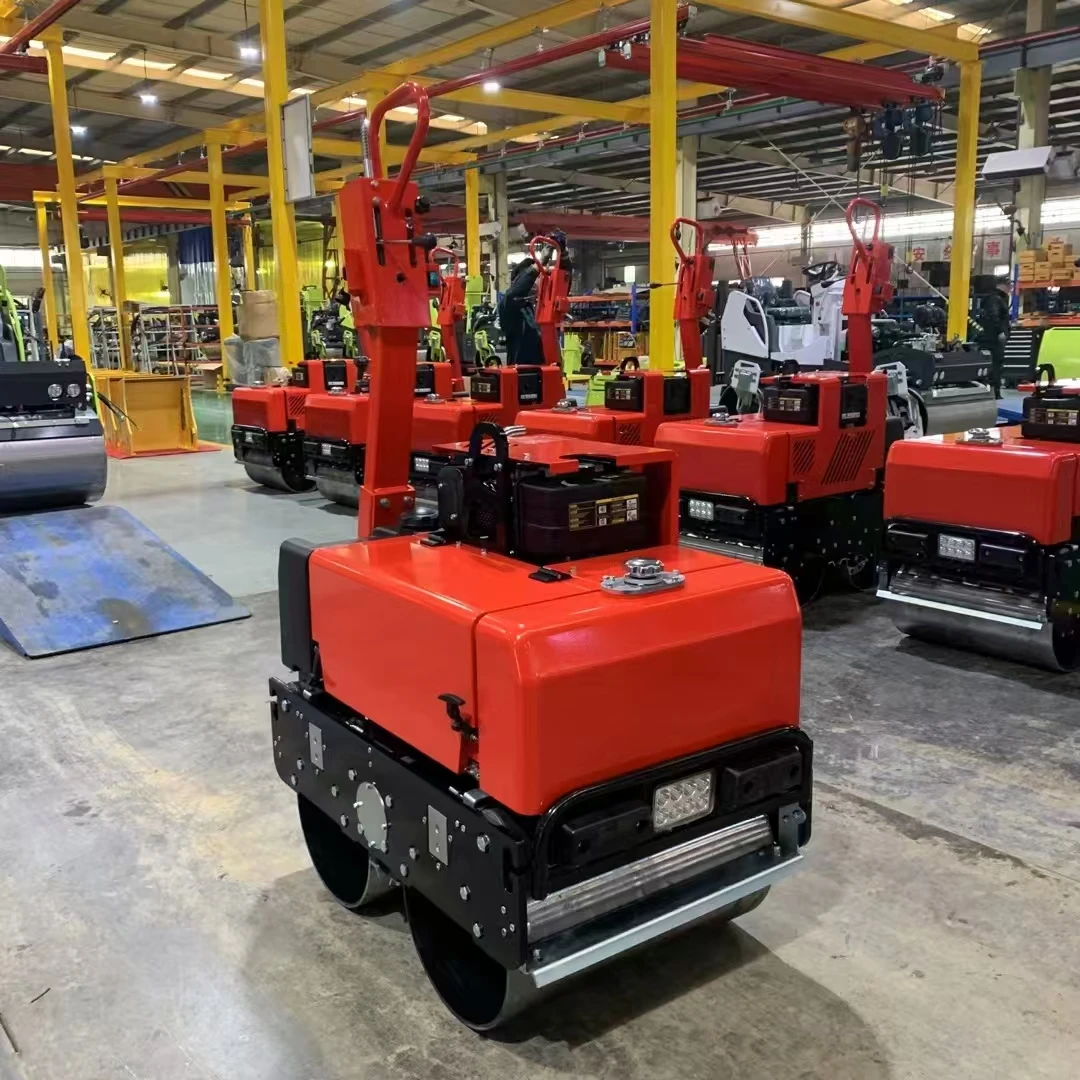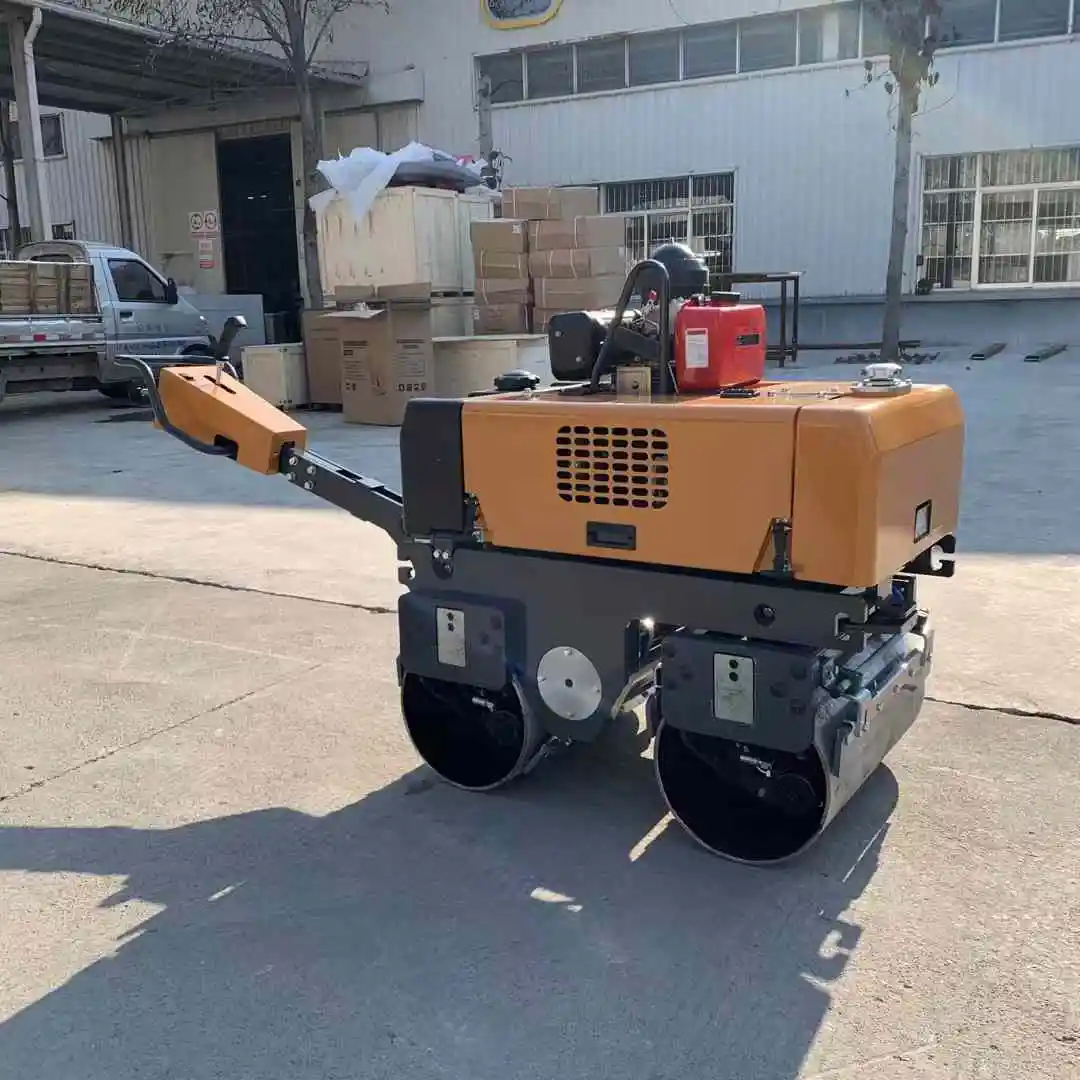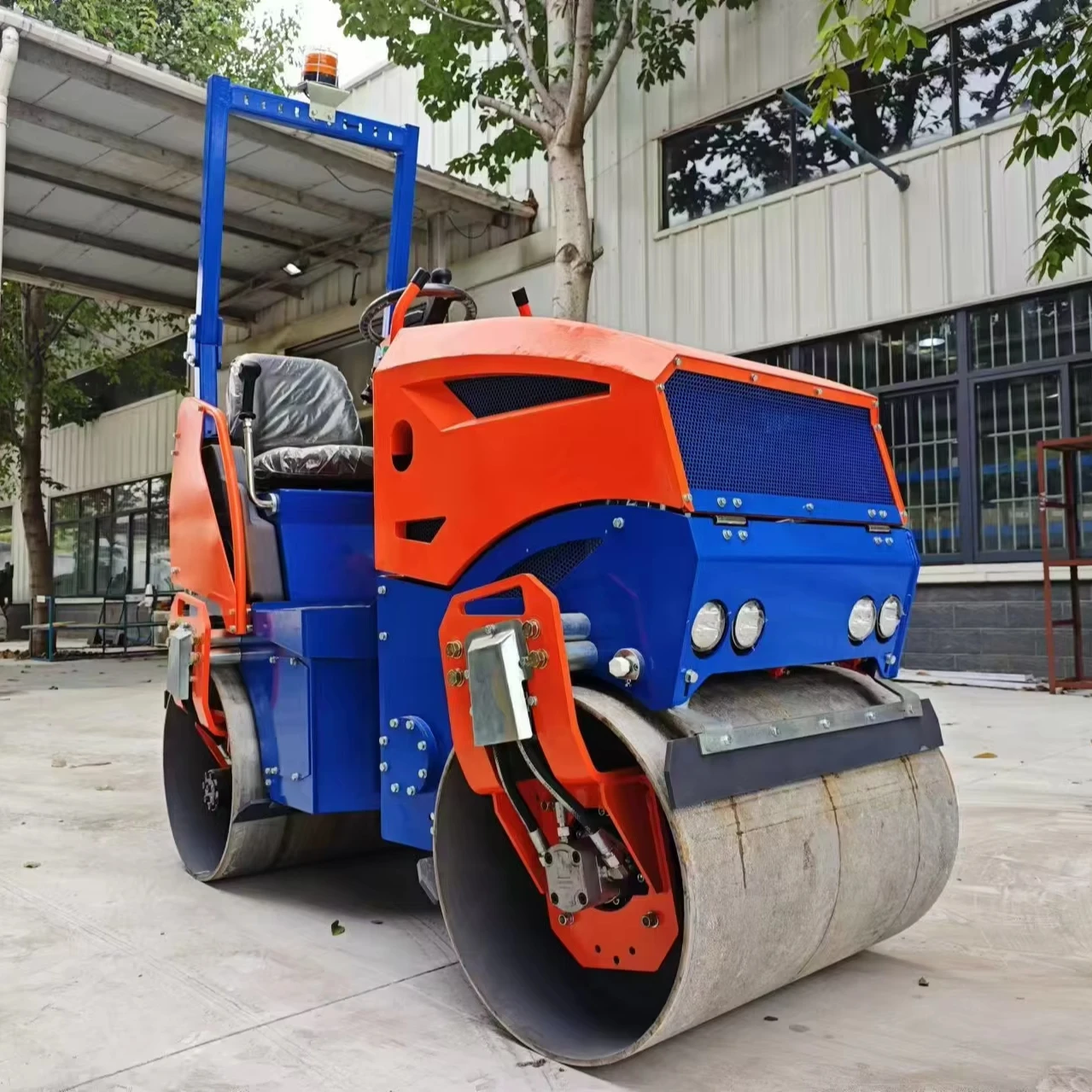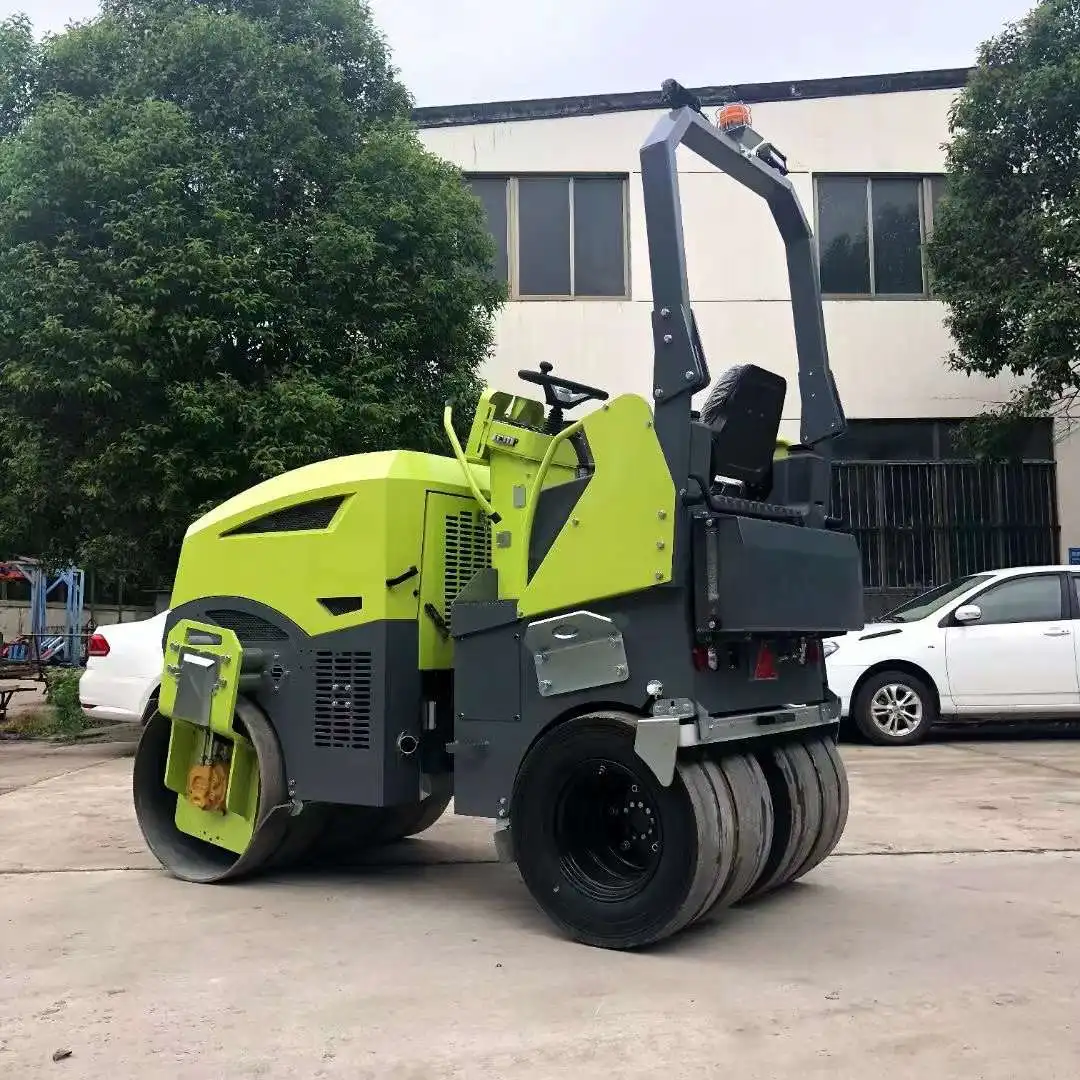Road Rollers: Trends in the Construction Equipment Industry
Current Trends in Road Roller Technology
Shift Toward Electric and Hybrid Road Rollers
Construction firms across the country are starting to adopt greener equipment options, especially when it comes to road rollers. Electric and hybrid versions have gained traction among contractors looking to cut down on their carbon footprint. The push for sustainability isn't just good PR either these machines actually produce fewer emissions while meeting all regulatory requirements. From an operational standpoint, switching to electric or hybrid models makes financial sense too. Fuel expenses drop dramatically and workers appreciate the reduced noise levels on site. Industry stats back this up sales figures for electric road rollers keep climbing each year. What we're seeing now goes beyond simple environmental benefits. Many companies view this equipment upgrade as part of a larger strategy embracing technological innovation throughout their operations.
Integration of GPS and Telematics Systems
Putting GPS and telematics into road rollers is changing how construction works happen across the board, giving contractors way better accuracy and saving them time. With these systems, managers get real time updates on where machines are at all times, making it much easier to plan out daily tasks without wasting hours waiting around. Contractors who use telematics report they spend less money fixing equipment because they know exactly when things need attention instead of letting problems build up over time. Industry reports suggest we'll see a lot more road rollers getting fitted with these tech upgrades soon as companies realize just how valuable the data becomes for making smart choices on job sites. And let's face it, nobody wants to pay extra for materials that end up sitting unused somewhere because someone got lost while trying to navigate the worksite.
Rise of Vibratory Roller Compactors
The construction world has been turning toward vibratory roller compactors lately because they get better results when it comes to packing down soil and creating smooth surfaces. These machines play a big role in today's road building and pavement work, helping make everything last longer without cracking or shifting over time. Sales numbers tell the story pretty clearly too - companies like Caterpillar and Volvo have seen steady growth in their vibratory roller lines over the past few years. What makes these rollers stand out? They pack dirt much quicker than older methods while leaving behind a consistently flat surface, which matters a lot on big highway jobs where perfection counts. We're seeing this move toward smarter equipment across the board in construction, not just for looks but because clients demand higher quality work that stands up to traffic and weather for decades.
Key Product Innovations in Modern Road Rollers
SVH60 Full Hydraulic Road Roller: Compact Efficiency
The SVH60 Full Hydraulic Road Roller has become something of a workhorse in tight construction situations where space is at a premium. What makes this particular model so effective? Its advanced hydraulic system gives operators much better control when navigating those tricky corners and narrow alleys common on urban job sites. Contractors who've used it report being pleasantly surprised at what this compact roller can accomplish. Despite its smaller footprint compared to traditional models, it still packs enough muscle to handle most compaction tasks without breaking a sweat. Looking at real world data from fleet managers across different regions shows these hydraulic systems actually cut down fuel costs by around 15% while also reducing wear and tear on parts. That kind of efficiency combined with its ability to squeeze into places other machines cant makes the SVH60 an increasingly popular choice among forward thinking construction companies dealing with today's complex project requirements.
0.8 Ton Mini Vibratory Compactor for Tight Spaces
The 0.8 Ton Mini Vibratory Compactor was built specifically for tight spaces on construction sites. Because it's so small, workers can move it around easily between buildings or through narrow passages without much trouble. We've seen these little machines make a big difference on actual job sites. For instance, they let crews compact soil behind retaining walls or under foundations where bigger rollers just won't fit. Looking at what happened on several recent jobs, the mini vibratory compactors definitely boost productivity compared to standard equipment. They offer better control over compaction depth and coverage area, which means less rework and faster completion times overall.
1.2T CE/EPA-Certified Road Roller with LED Monitoring
Built to satisfy those tough regulations from both CE and EPA standards, the 1.2T Road Roller stands out among construction gear that actually meets all the compliance rules. What makes this model special? It comes equipped with LED monitoring systems that show what's happening during operation right now, giving operators better control over their work. Industry professionals have noted these kinds of features really boost safety on site while keeping things running reliably day after day. The LED tech isn't just good it's pretty much the best available when it comes to tracking performance details accurately. With all these technological additions packed inside, this particular road roller becomes the go-to option for road building jobs where following regulations matters as much as getting precise results.
4-Ton Diesel Road Roller with Advanced Hydraulics
The 4-Ton Diesel Road Roller stands out thanks to its impressive technological upgrades, particularly in the area of hydraulic systems that give it serious muscle for different kinds of construction work. These advanced hydraulics mean faster compaction times which translates to getting jobs done quicker at actual construction sites. Contractors who have used this model report that it performs much better than previous versions they've worked with. The improvements aren't just about speed either the diesel engine runs more efficiently while the whole machine is built to last through tough conditions. For anyone involved in road building or site preparation today, this roller has become something of a game changer because it combines power with reliability when traditional equipment would fall short.
6-Ton Dual-Wheel Heavy-Duty Compactor
The 6 Ton Dual Wheel Heavy Duty Compactor was built specifically for those tough construction jobs that push equipment to its limits. What sets this machine apart is its dual wheel system that gives extra stability while packing down materials with real power. Contractors love how this model gets the job done faster than most competitors, especially when working around tight spaces or uneven ground conditions. Many site managers report cutting project times by nearly half thanks to better mobility across different terrains. This compactor has become something of a staple on job sites lately, showing just how much the construction world wants machines that can handle rough work without breaking down every few weeks.
Sustainability and Emission Reduction Strategies
Adoption of Yanmar/Kubota Low-Emission Engines
The construction sector is moving toward using Yanmar and Kubota's low emission engines as part of its green initiatives. These machines help cut down on pollution during building work by putting out fewer harmful gases. With governments around the world tightening their rules on what companies can emit into the air, getting these engines installed makes it easier for firms to stay within legal limits and possibly save money at the same time. Environmental research shows that switching to these particular brands cuts emissions by roughly 30 percent compared to older engine models. Such a drop in pollutants does good things for the planet while fitting right into international goals aimed at shrinking carbon footprints across all kinds of construction sites. That's why many builders today prefer going with Yanmar and Kubota over other options available in the market.
Energy-Efficient Hydraulic Systems
Construction machinery is getting a major upgrade thanks to energy efficient hydraulic systems that cut down on fuel burn and emissions across the board. What makes these systems stand out? They basically improve how much power construction equipment can deliver relative to its weight, so machines work better without guzzling extra fuel. Behind this tech are clever hydraulic designs that waste less energy during operation. Many newer models come equipped with smart sensors too, which tweak power output depending on what the machine actually needs at any given moment. Real world tests show around 20% boost in efficiency when switching to these systems, which translates into real money savings for contractors and fewer pollutants going into the atmosphere. For construction companies looking to stay ahead, adopting these greener technologies means better performance metrics while keeping project budgets under control.
Challenges and Solutions in Road Roller Operations
Addressing Skilled Operator Shortages
Road construction and related operations face serious problems finding enough qualified workers right now. The whole industry is struggling with this situation, especially since there are so many big infrastructure projects getting underway across the country. Companies trying to solve this problem have started various initiatives. Some run training sessions for existing staff while others create apprentice programs or work harder to find good candidates through different channels. According to recent reports from trade associations, even with all these attempts to bring people into the field, there's still not enough skilled labor available compared to what's needed. That means we need something completely different if we want real progress. Pay raises might help attract attention, but combining better wages with tech-based training options seems like a smarter approach for drawing younger generations into these essential jobs.
Meeting Global Emission Standards
Meeting global emission standards matters a lot for companies working with road rollers since these rules are all about cutting down on environmental damage. The industry has seen some pretty cool tech developments lately that help with this compliance stuff. Think things like better exhaust filters and those alternative fuels everyone keeps talking about. Groups such as the EPA in the US and their counterparts across Europe set these standards, which definitely change how businesses operate day to day. These regulations push operators toward greener approaches in their work. What's interesting is that many of the technologies designed to meet these standards do more than just reduce emissions they actually make operations run smoother too. Companies that adopt these technologies tend to stay ahead of the competition because they're already prepared for the next round of stricter environmental laws coming down the pipeline.
Future Outlook for Road Rollers in Construction
Smart Compaction Technology Integration
Smart compaction tech is making roads better built and faster constructed. The system puts sensors and internet connectivity right into construction machines so workers get instant data on how well they're compacting materials. This helps them adjust their work on site, which means stronger pavements overall. We're looking at big growth for smart compaction stuff in coming years because contractors want better methods and cheaper ways to do things. Most industry folks think the Internet of Things will be key here, connecting all sorts of equipment together across construction sites. While nobody knows exactly what happens next, many believe there'll definitely be improvements in road quality plus savings on day-to-day expenses when companies adopt these technologies properly.
Modular Designs for Multi-Site Flexibility
Construction equipment manufacturers are increasingly turning to modular designs because they offer real flexibility and can scale up or down depending on what the job needs. Machines built this way can be tweaked quickly when site conditions change or new requirements come in during a project. Think about how different construction sites need completely different setups compared to old fashioned fixed equipment that couldn't adapt at all. Some major infrastructure projects in Europe recently saw productivity jump by 30% after switching to modular systems. Looking ahead, contractors want gear that works just as well on highway jobs as it does in urban developments. This demand means we're likely to see more manufacturers building equipment with interchangeable components, which saves time and money when working across multiple locations simultaneously.
 EN
EN
 AR
AR CS
CS DA
DA NL
NL FI
FI FR
FR DE
DE IT
IT NO
NO KO
KO PL
PL PT
PT RO
RO RU
RU ES
ES SV
SV TL
TL ID
ID LV
LV SR
SR SK
SK SL
SL VI
VI SQ
SQ ET
ET TH
TH TR
TR AF
AF MS
MS GA
GA HY
HY KA
KA BS
BS LA
LA MN
MN MY
MY KK
KK UZ
UZ KY
KY











